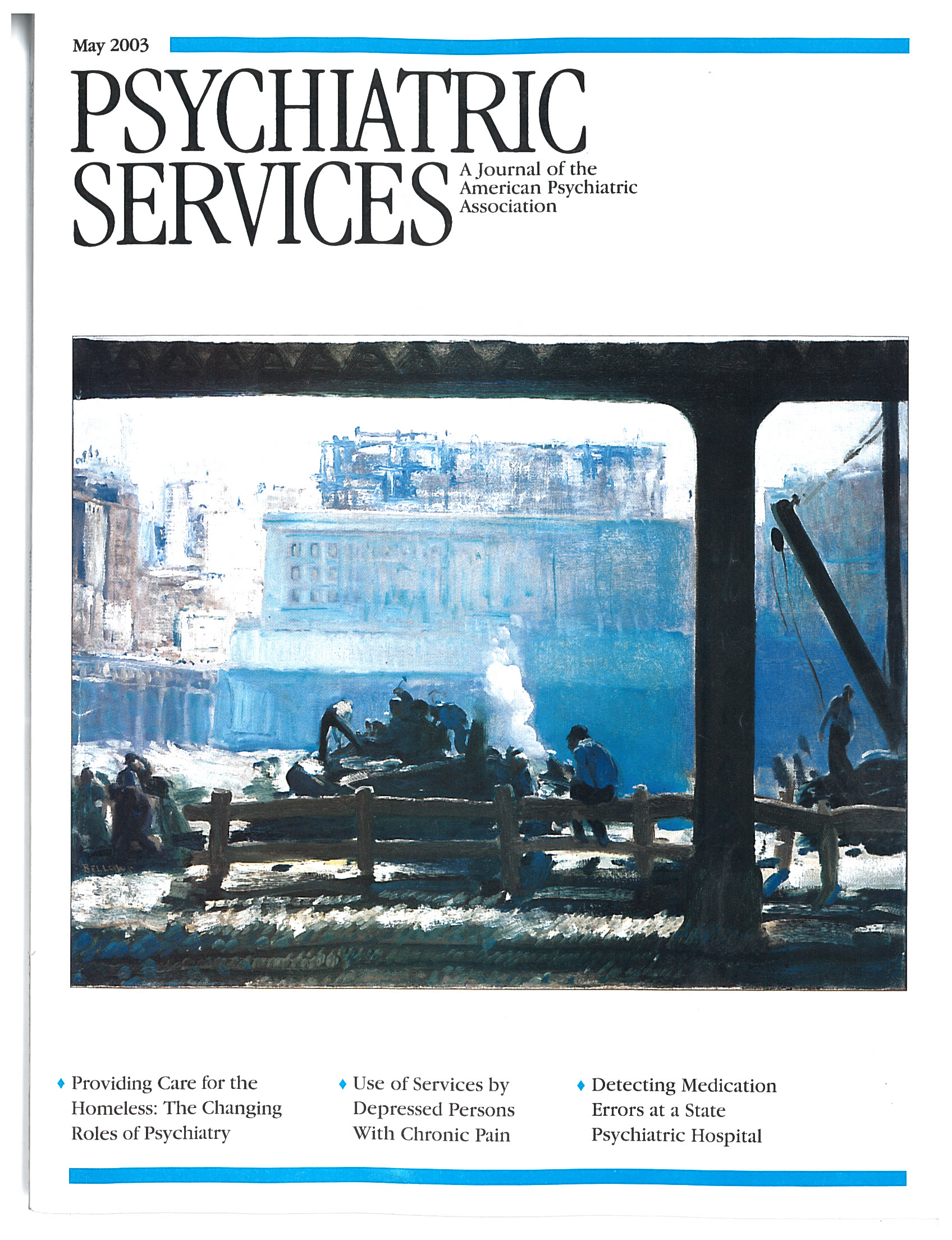Suicide, Firearms, and Data
To the Editor: The Datapoints column by Brickman and Mintz (1) in the February 2003 issue illustrates the difficulty of interpreting suicide and self-inflicted injury rates. The authors point out that while the suicide rate has fallen since 1992, the rate of self-inflicted injury has risen, and they suggest that self-inflicted injury may be a proxy for attempted suicide. They note that the availability of less lethal antidepressants, improved emergency care, and decreased stigma of mental illness may account for an increase in nonlethal suicide attempts. It is curious that they do not mention the role of firearm availability. Medical and public health researchers have long viewed the availability of firearms as a significant causal factor in suicide (2).
It may be that the data presented by Brickman and Mintz are not compatible with that view. During the period they examined—1992 to 1999—the availability of firearms increased dramatically. More people bought and owned firearms than ever before, despite strong gun control advocacy and legislation. Thirty-four states allowed law-abiding citizens to carry concealed firearms (3). If the medical and public health researchers' view about firearms is correct, the suicide rate should have increased rather than decreased. Furthermore, firearms are the most lethal method of attempting suicide. Increased availability of firearms equals increased availability of a more lethal method. An increase in firearm availability should therefore result in a decrease in nonlethal suicide attempts.
The omission of a discussion of firearms by Brickman and Mintz might be justified on the grounds that their column discusses overall rates, not those of specific groups. However, similar omissions are also common in the medical literature and in the publications of public health groups. The rate of suicide by firearm is higher among inner-city black youths than among black youths in rural areas, where firearms are much more available. This finding holds true for all firearm violence among black youths. However, such comparisons are frequently omitted in medical and public health literature.
Several factors affecting the suicide rate appear to be more evidence based than does firearm availability. Periodic increases in youth suicide rates in the United States correlate in time with those in the United Kingdom, where the suicide rate is many times higher and the common method is carbon monoxide poisoning, not guns (4). Investigations of contagion, cocaine, and other cultural factors often appear to be neglected because of overzealous pursuit of firearms as a cause of suicide.
Perhaps certain facts and observations are omitted from firearm studies and medical and public health literature because they are uncongenial to the views of researchers who wish to emphasize the role of firearms. The omission may stem from personal or political beliefs rather than from the data. If so, it would account for the relative neglect of factors more pertinent to understanding—and perhaps modifying—trends in suicide and attempted suicide.
Dr. Berg is assistant professor of psychiatry at Harvard Medical School and Massachusetts General Hospital in Boston.
1. Brickman AL, Mintz DC: US rates of self-inflicted injury and suicide. Psychiatric Services 54:168, 2003Link, Google Scholar
2. Boyd JH: The increasing rate of suicide by firearms. New England Journal of Medicine 308:872-874, 1983Crossref, Medline, Google Scholar
3. Alcohol, Tobacco and Firearms Summary Statistics. Washington, DC, US Bureau of Alcohol Tobacco and Firearms, 1997Google Scholar
4. Hawton K: By their own young hand. British Medical Journal 304:1000, 1992Crossref, Medline, Google Scholar



